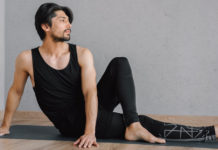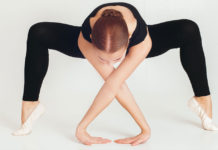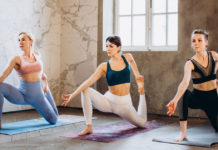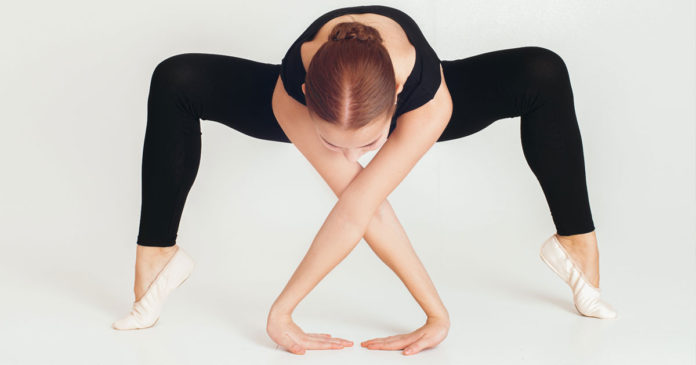Introducing the realm of Ashtanga Yoga poses, an ancient and vigorous style of yoga that has become more well-liked due to its many advantages. This section will provide an overview of Ashtanga Yoga poses, including an exploration of its postures, advantages, and the reasons for its widespread popularity.
Sri K. Pattabhi Jois created the Ashtanga Yoga poses throughout the 20th century. It adheres to a certain series of asanas (postures) and vinyasa (synchronized breathing). The practice is renowned for being physically taxing and for emphasizing endurance, flexibility, and strength.
Ashtanga Yoga places a strong emphasis on regularity and self-control. As their flexibility and strength improve over time, practitioners are urged to go from one posture to the next in a predetermined order of asanas.
There are several advantages to doing Ashtanga Yoga poses. In terms of physical health, it raises levels of power, mobility, and balance. In addition to training the muscles all around the body, it encourages improved alignment and posture.
Ashtanga Yoga poses have mental and emotional advantages in addition to physical ones. By using concentrated breathing methods and paying close attention to each action, the exercise helps to relax the mind. As a result, there may be a decrease in stress and an increase in mental clarity and general wellbeing.
If you are fresh to yoga or have practiced other styles of this age-old discipline, learning Ashtanga Yoga poses may be a mind- and body-changing experience. So come along as we explore the realm of Ashtanga Yoga positions in more detail and learn about its amazing advantages.
The Primary Series: A Breakdown of the Fundamental Asanas
We shall explore the main asanas that comprise Ashtanga Yoga poses in this part. We will examine every position in depth, covering everything from salutes to the sun to standing and sitting postures, giving you a thorough grasp of their advantages and appropriate alignment.
An Ashtanga yoga practice that is both powerful and balanced is built around the principles of the main series. It’s a sequence of postures that are done in order and flow together naturally, making it a dynamic and peaceful mat practice. We will start by going over the sun salutations, which are the foundation of all yoga practices and aid in body warming.
We’ll start exploring Ashtanga Yoga poses next. These postures enhance balance and concentration in addition to strengthening and stabilizing the body. We will carefully break down every posture, from Tadasana (Mountain posture) to Virabhadrasana (Warrior Pose), so that you have a firm grasp of the alignment concepts involved.
We shall next turn our focus to Ashtanga Yoga poses sitting positions. These poses provide a chance for reflection, flexibility building, and deep stretching. We will examine how these postures, which range from Janu Sirsasana (Head-to-Knee Forward Bend) to Paschimottanasana (Seated Forward Bend), may foster both physical and mental well-being.
This explanation of the basic asanas in the main series is meant to provide you useful insights and direction, regardless of your experience level with Ashtanga yoga and your desire to improve. Now spread out your mat, take a deep breath, and let’s go on this adventure together!
Sun Salutations (Surya Namaskar)
A basic series of yoga poses called Sun Salutations, or Surya Namaskar, are often performed in Ashtanga Yoga and other forms of yoga. This section will examine the procedures for executing Sun Salutations and emphasize the many advantages they provide.
There are normally 12 postures in the Surya Namaskar routine, all of which flow into one another. Every posture is in harmony with the breath, resulting in a calm and rhythmic movement. Usually starting and ending in Tadasana (Mountain Pose), the sequence incorporates lunges, backbends, forward folds, and plank postures.
Regularly doing Sun Salutations has several advantages for the body and mind. First off, by strengthening and extending different muscular groups, it’s a great way to warm up the whole body. It increases hip, shoulder, hamstring, and spine flexibility. Sun Salutations also assist to promote blood circulation and digestion.
Sun Salutations may be energizing and stimulating mentally. Stress levels are lowered and the mind is calmed by the flowing motions and concentrated breathing. Additionally, it may enhance focus and encourage awareness while practicing.
Sun Salutations, in particular, are often used in Ashtanga Yoga as a basis for developing strength and stamina prior to progressing to more difficult poses or sequences. They provide a chance to establish consistency in practice and foster discipline.
Sun Salutations are a great way to start or continue your yoga practice, no matter your level of expertise. They provide a comprehensive approach to physical health and, by mindful movement, they enhance mental well-being.
Standing Poses (Tadasana Series)
A key part of Ashtanga Yoga poses is the Tadasana series, which are commonly referred to as the standing poses. These postures aid with alignment and posture correction in addition to enhancing strength and stability.
The promotion of balance and grounding is one of the main advantages of standing postures. Practitioners may build a solid basis for their practice by starting from the feet and using their leg muscles. This steadiness enhances concentration and general body awareness.
Standing positions provide mental advantages alongside physical ones. They call for focus and awareness, which may assist to clear the mind and develop an awareness of the present moment while engaging in the activity.
There are a few crucial pointers that should be followed to guarantee correct alignment in standing postures. First, try not to prefer one foot over the other by keeping the weight distribution of both feet equal. Second, to keep your posture straight and support your spine, contract your core muscles. Lastly, stretch into the top of the head with the shoulders loosened and directed away from the ears.
Your Ashtanga yoga practice might benefit from standing poses if you’d want to increase your strength, equilibrium, alignment, and concentration. For a safe and efficient practice, never forget to pay attention to your body’s limits and stay within your own unique range of motion.
Seated Poses (Padmasana Series)
Ashtanga Yoga poses places a great deal of emphasis on the Padmasana sequence, or sitting postures. The advantages of these postures to practitioners are diverse and include better posture, more flexibility, and improved attention.
The Padmasana sequence of seated positions is well renowned for its capacity to quiet the mind and prime the body towards meditation. They facilitate hip flexion and lower back muscular stretching. These positions also enhance blood circulation and promote the digestive system.
These sitting positions may be modified to be more approachable for beginners. Blocks and blankets are examples of props that may be used to support and maintain appropriate alignment. For novices, gradually extending the time spent in various positions may also be helpful.
It is crucial to remember that while practicing sitting postures, one should pay attention to their body and refrain from pushing over their comfort zone. In Ashtanga Yoga poses, these sitting positions may be progressively mastered and their full benefits can be realized with regular practice under competent direction.
The Intermediate Series: Progressing Towards Greater Strength and Flexibility
In Ashtanga Yoga poses, the intermediate series is an essential stage for practitioners who want to go toward more strength and flexibility. This series adds more difficult asanas and strengthens the base laid in the previous series.
Backbends are an essential part of the intermediate sequence. Supporting the back musculature while expanding the torso, shoulders, and spine are these asanas (Ustrasana, Kapotasana, and Ustrasana, respectively). Backbends not only increase flexibility but also enhance posture and reduce upper-body strain.
Arm balances are another facet of the intermediate series. Strong arms, balance, and a strong core are necessary for poses like Astavakrasana (Eight-Angle Pose) and Bakasana (Crow Pose). These postures develop attention, concentration, and mental toughness in addition to improving physical strength.
It may be physically taxing and satisfying to practice the intermediate series. While cultivating a more profound connection with one’s body and respiration, it forces practitioners to move outside of their comfort zones. To prevent injury, it is crucial to do these asanas with patience, awareness, and expert alignment instruction from a teacher with expertise.
In general, by integrating arm balances and backbends during the intermediate series of Ashtanga yoga, practitioners can experience enhanced flexibility, strength, body awareness, and a heightened sense of achievement throughout their yoga expedition.
Ashtanga Yoga Poses: Tips
Prioritizing safety and efficacy is essential while doing Ashtanga Yoga poses. You may guarantee a secure and advantageous practice by adhering to a few essential guidelines.
Above all, it’s important to pay attention to your body. Since everyone has different degrees of strength and flexibility, it’s important to respect your boundaries. Overexertion might result in strains or injuries. Rather, concentrate on making little steps forward and respect your body’s limits.
Steer clear of frequent blunders while doing Ashtanga Yoga poses. One typical error is giving up correct alignment in order to have a longer stretch. To avoid putting too much pressure on joints or muscles, it’s critical to maintain proper alignment and posture in each position.
It’s also very important to look after your body throughout practice. This involves doing sun salutations or light stretches to warm up before beginning your workout. Including rest days in your practice plan also helps to avoid overexertion by giving your body a chance to recuperate.
Finally, getting advice from a certified teacher may make a big difference in how safe and successful your Ashtanga Yoga poses practice is. A skilled instructor may provide you individualized instruction, real-time correction for alignment errors, and adjustments for postures that you may find difficult.
You may enjoy the numerous physical and emotional advantages Ashtanga Yoga poses while reducing the danger of strain or injury by paying attention to safety and implementing these recommendations into your practice.
The Importance of Consistency and Patience on Your Ashtanga Yoga Journey
Developing a regular practice
Developing a regular practice and exercising patience are essential components of starting an Ashtanga Yoga practice. Ashtanga yoga is a strenuous and orderly kind of yoga that calls for commitment and devotion. Practitioners may reap many advantages for their mental, emotional, and spiritual health by committing to a regular practice.
To build strength, flexibility, and balance, one should practice Ashtanga yoga consistently. By doing the series of postures on a regular basis, the body becomes used to the motions, which enhances muscular tone and general physical health. Furthermore, regular practice improves attention and concentration, allowing practitioners to explore the intricacies of each pose.
Throughout the Ashtanga Yoga journey, patience is equally vital. It takes time for practitioners to grasp difficult positions and for their bodies to adjust, so progress can sometimes not be instantaneous or linear. People who practice patience are able to accept their present skills and stay receptive to future development.
By honoring the body’s limits and refraining from pushing it beyond its ready state, patience also aids in the prevention of harm. It enables practitioners to pay close attention to the cues provided by their body and change as needed without giving up or becoming angry.
In conclusion, developing a regular Ashtanga Yoga practice has many advantages for both mental and physical health. In this trip, patience is essential because it enables people to recognize their accomplishments at every turn and realize that improvement is a gradual process. Ashtanga Yoga practitioners may completely immerse themself in the transforming force of Ashtanga Yoga by embracing regularity and developing patience.
Conclusion: Embrace the Ashtanga Yoga Poses and Experience Transformation
In conclusion, adopting Ashtanga yoga as a practice may result in a mental and physical transformation. You may achieve harmony and balance in your practice by combining the different asanas, or positions, into your regimen.
Ashtanga yoga is a methodical and regimented approach to yoga that enables practitioners to go through a set of postures in a predetermined order. Over time, this methodical technique aids in the development of strength, flexibility, and endurance.
Those who practice consistently might see significant changes in their physical appearance. Ashtanga yoga encourages practitioners to push themselves to the edge and discover new physical potential. This may lead to better physical health generally, as well as stronger muscles and better posture and flexibility.
In addition to its physical advantages, Ashtanga yoga promotes mental and emotional development. The practice’s meditative aspects and concentrated breathing exercises assist to lower tension and quiet the mind. After an Ashtanga yoga practice, practitioners often describe feeling more focused, grounded, and at peace.
Finding equilibrium both on and off the mat is a result of practicing balance on the mat. Adopting Ashtanga yoga allows people to develop self-awareness and mindfulness in their everyday lives. People are able to make deliberate decisions that are consistent with their beliefs and objectives because they have a more acute awareness.
In conclusion, you open yourself up to a transforming experience that goes beyond simple physical exercise by including Ashtanga Yoga poses into your daily practice. You may see improvements in your health, mind, and general well-being by being committed to this age-old practice. Why then wait? Take up Ashtanga yoga now to begin your journey toward personal development!









